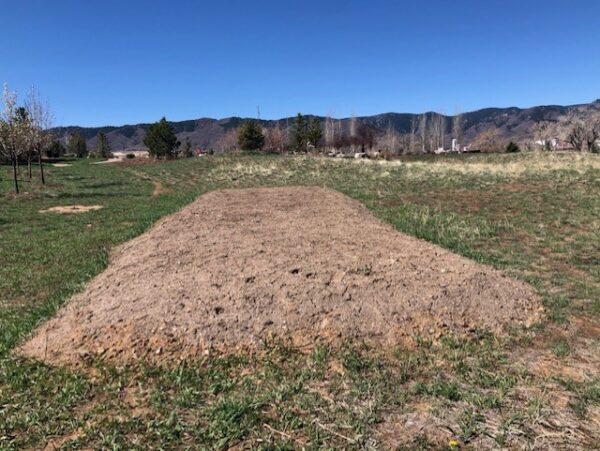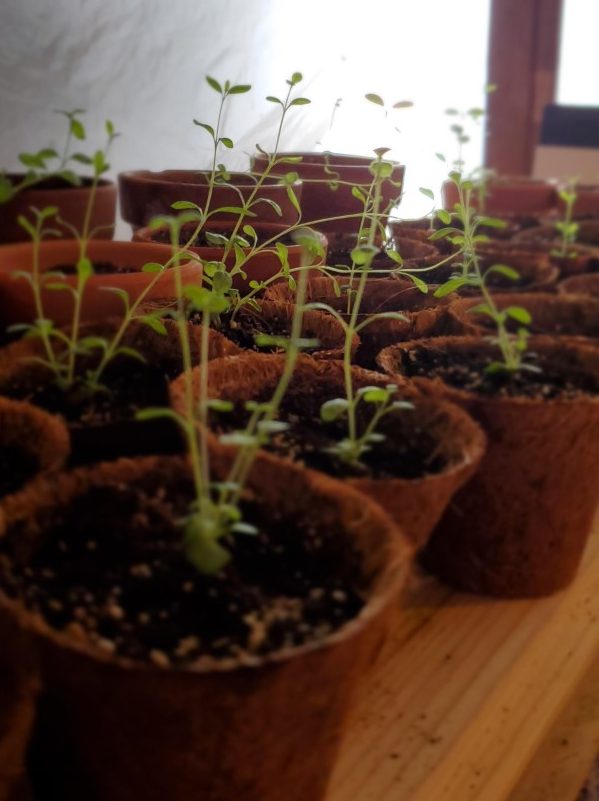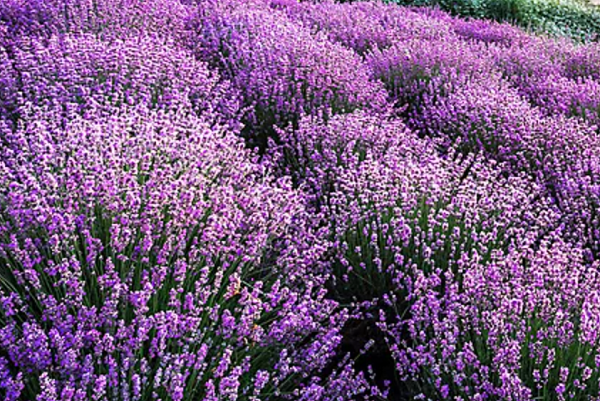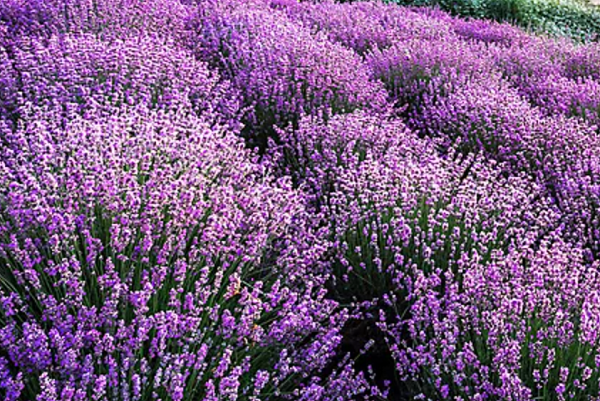Nature, it fills the senses. As you stand surrounded by the beauty of our Colorado landscapes, you may notice the height of the mountains, the blue of the sky, the scent of pine, and the sound of a mountain stream. I believe that all these elements of nature bring a sense of peace to Seven Stones. This summer, we will bring another natural beauty that will awaken your senses, our new Lavender Garden. This patch of soil has been sitting all winter waiting for the arrival of the lavender plants.
Lavender is a natural addition to our land, where the goal is to provide beauty among nature. In preparing for this new addition there has been much planning, thought and research to make sure we stay true to our mindset that plants be native or conducive to our climate, which, like lavender, usually includes being drought tolerant. Although, lavender is not native to Colorado, it is perfectly suited to grow here. It appreciates the warm days of summer and our cool nights, and does not require much water once established.
Preparing the soil
Would you like to know how we started to build our lavender garden? The first step was preparing the soil. Like most plants, Colorado’s clay soil can be a challenge. Lavender does require well-drained soil, so the top layer required a small amount of amended soil. Lavender also likes a slightly alkaline soil, so that’s exactly what we added.
Last fall, we built a berm with layers of cardboard and dirt. The bottom of the berm was our natural grass, which we decided to remove naturally. As we added the layers of dirt and cardboard, we knew that eventually, without sun and light, the grass would die and add nutritional value to the mound.
During the winter months, the cardboard would start to break down, and the soil would slowly be established and ready for the lavender plants sometime in the late spring.
Besides soil, we planned for the water needs as well. We chose this area for the lavender garden not only for the amazing mountain views, but also because there’s irrigation nearby. Once we plant the starter plants, we will begin watering daily to keep the soil moist until the plants are established. After that, watering once or twice a week is enough. Lavender is drought tolerant; it gets by with less water than most other plants. We chose overhead watering because lavender plants don’t like to sit in water which drip irrigation could allow.

Choosing the plants
In Colorado, there are two types of lavender that grow well. They are the English Lavender (Angustifolia) and Lavandin (Intermedia), which is a cross between English and Portuguese lavender. We considered both varieties and ended up choosing three types of lavender cultivars. Phenomenal (Intermedia), Royal Velvet (Angustifolia), Munstead (Angustifolia).
We have started growing the Munstead variety from seed indoors under grow lights. Munstead is easy to find, in fact, most of the seeds that you can find in nurseries and online gardening stores come from this variety.

Phenomenal is a new cultivar, and it was one of our choices as it is supposed to bloom longer. Because Phenomenal is from the Intermedia group, this variety will naturally grow slightly taller than the others, too.
Royal Velvet made it to our top three choices because this variety fills in the gap of the blooming times. Our ultimate goal for our lavender garden is to enjoy blooming lavenders from June through September.
The 1-year-old Phenomenal plants are coming from Little Valley, a local nursery in Brighton, Colorado. The Royal Velvet lavender will arrive as two-year-old plants and will be purchased from Heritage Lavender Farm in Berthoud. When the time is right, we will add approximately 120 lavender plants to our future lavender garden.

When can you come visit the lavender garden?
Our planting season is right around the corner. We’re looking at mid-May to plant, weather permitting, of course. You should be able to walk around and through our lavender garden on the mulch walkways. We are expecting blooming season in our first year in late summer. Next year should be a more even blooming season, with more mature lavender plants.
Our views of the surrounding foothills from the lavender garden will be spectacular. If all goes well, according to our plan, we will have room to expand. Our inspiration for the design came from the classical French gardens style.
On top of human visitors, we’re hoping to attract bees and other pollinators. We hope you come visit and enjoy our new feature later this summer.
Written by Amy Lynch and Monika Anderson

